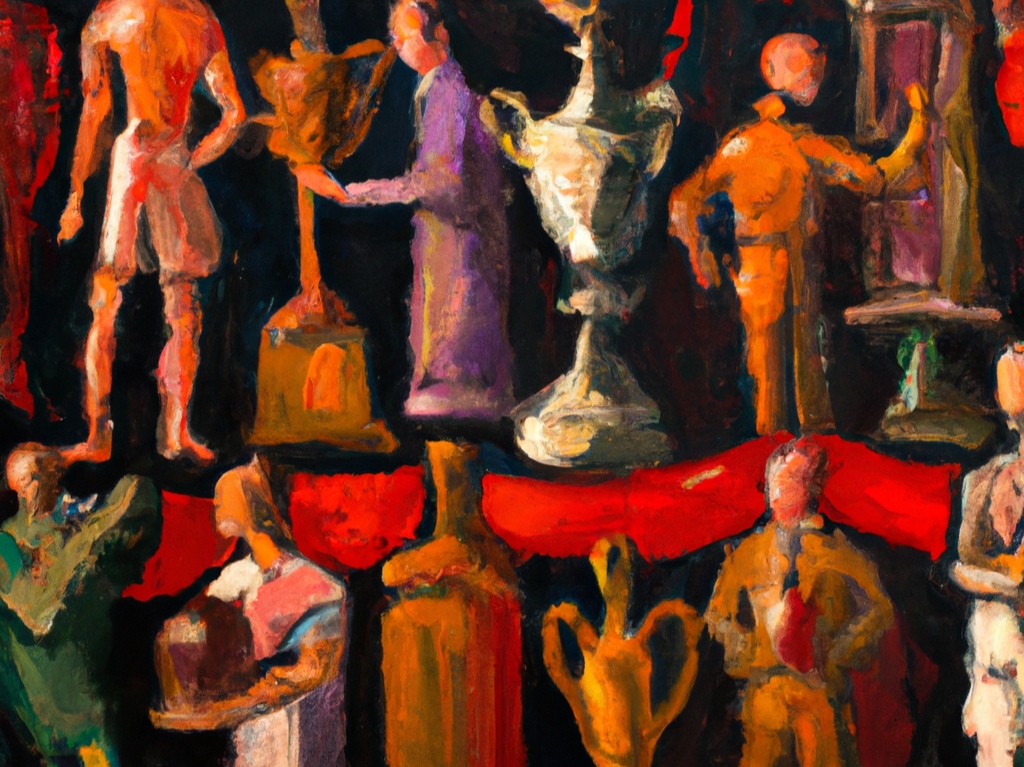
A Brief History Lesson: Trophies and Awards
Share
Today, awards and trophies are big business. No matter if they are being hoisted above the heads of winners after a grueling sports match or handed out to actors and singers at gala events, they have a clear purpose of rewarding achievement. Each trophy tells you that the person holding it is a champion, they are the best of the best. They make a big statement, such that people of all ages from all kinds of organizations and branches receive trophies for their success. Most of us have a strange fascination with all things shiny and shiny, but trophies go beyond our love of glitter and gold. You want to know more? Here is a brief history of the trophies and awards.
The ancient times of trophies
Trophies have been around a lot longer than any of us can remember. They were once used to reward soldiers and commemorate victories. Since the word trophy comes from a Latin word trophaeum which roughly translates to "a monument dedicated to a victory," it's easy to see how it used to have a strong connection to battles and triumphs. In ancient Greece, for example, soldiers used to collect weapons and armor from fallen enemies, hang them up to look like a warrior, and inscribe battle details on the monument. Over time, the practice changed, but taking a trophy from enemies has always been a way to prove your victory.
Later, in ancient Olympic times, the victors were rewarded for their sporting prowess and received laurel wreaths, amphorae filled with olive oil, bronze shields, and silver goblets. Fun fact: When the first modern Olympic Games were held in 1896, the winners were awarded silver medals, because at that time silver was considered to be more precious.
Middle Ages
While the Middle Ages are better known for invasions, population declines, and the collapse of centralized authority than shiny awards, this is a period in history that actually gave us the most recognizable forms of awards and trophies. . The two-handed cup we know today used to be awarded to the winners of sporting events in the early 17th century. These cups are still awarded, especially in sports such assailing , motor sports , horse racing, and tennis. The Stanley Cup, the Davis Cup, and the Wimbledon Cup are some of the most recognized prizes ever created.
Trophies and war medals
The tradition of trophies dates back thousands of years, when people handed out objects as symbols of victory and achievement in sports competitions and wars. The ancient Greeks, Romans, and Egyptians used crowns, medals , shields, and trophies of arms to honor the winners of games and battles.
In the Middle Ages, knightly tournaments became very popular and elaborate trophies such as silver goblets and silk banners were awarded. Over time, trophies became increasingly elaborate and decorative objects, and were awarded not only in sporting competitions, but also in exhibitions and art and literature competitions.
Today, trophies are common around the world, given to athletes, soldiers, academics, artists, and other professionals who have achieved something significant in their field. Modern trophies are produced in a wide variety of materials, including plastic, glass , and resin, and can be designed in a wide variety of shapes and styles. They are often framed or placed in display cases as a memento of achievement.
The oldest sports trophies still awarded are the FA (Football Association of England) Cup and the Olympic Games gold medal. Medals are also awarded to participants in the Olympic games and other sporting events.
Military trophies have been awarded since ancient times, and war heroes are often recognized with medals, which are a form of trophies. Most notable are the Medal of Honor and the Purple Heart. War veterans often wear their medals for bravery and success in war with pride, and many choose to frame them for display in their homes and trophy rooms. All awards can be framed and placed in display cases. It's a great way to keep prizes looking good and give them a place of honor.

Today, trophies are widely produced and used to honor not only athletes and war heroes, but also highly successful academics, actors, musicians, artists, and doctors. In the 19th century, it was very popular to award people super-expensive trophies, many of which were made in Birmingham jewelers. One of these trophies that came out of a Birmingham shop is the Wimbledon Ladies and Gentlemen's Trophy. However, modern trophies differ from ancient ones by two main differences. Thanks to the availability of materials like plastics, glass, and resin, trophies don't cost as much as they used to. His role is more symbolic than literal. The other difference is diversity. Most trophies from the past used to look more or less the same, especially the cups, but when it comes to modern awards, if you can design it, it can be produced. Today, we have a variety of materials and new manufacturing processes that can turn even the most abstract vision into a magnificent trophy.
So whether you earned your trophies for participation or something truly extraordinary, the next time you go through your awards, consider the thousands of years of tradition you're a part of. And maybe consider framing or displaying your trophies – it will be a huge ego boost that will motivate you to be even better at what you do.
